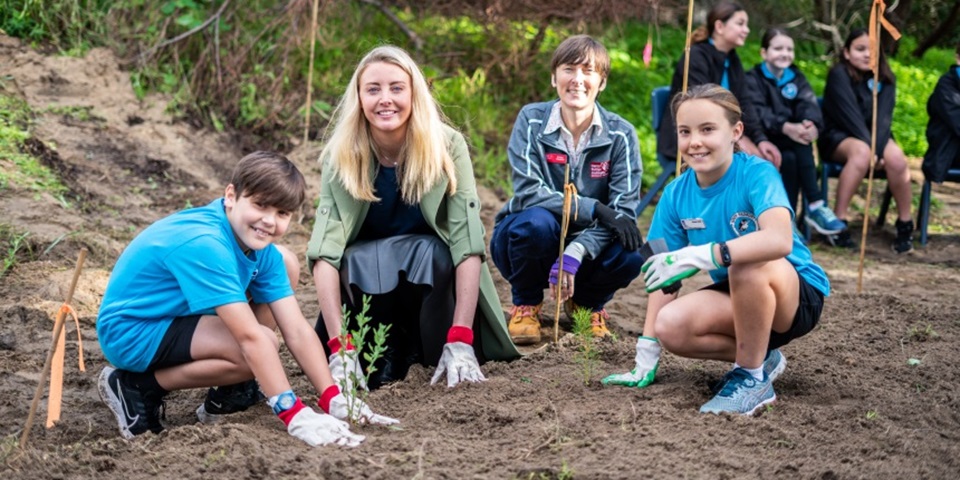News
Western Australia’s first tiny forest for community-led urban greening

The first ever Miyawaki forest has been planted at an Australian school. It is also the first forest of its kind planted in Western Australia.
Murdoch University’s Dr Grey Coupland, from the Harry Butler Institute (HBI), has partnered with South Padbury Primary School (SPPS) to plant Western Australia’s first tiny forest, following the Miyawaki planting method developed in Japan.
“Miyawaki forests are becoming increasingly popular for urban greening to rehabilitate degraded areas and increase biodiversity in urban areas,” Dr Coupland said.
“They contain up to 30 different native species planted in a dense planting arrangement and anecdotally, grow up to 20 times as fast as traditionally planted forests, and support up to 100 times the diversity.”
Dr Coupland said the project will help assess how well the Miyawaki method is suited to the Australian environment using Australian species, while also teaching primary school students the importance of citizen science.
South Padbury Primary School’s forest contains 26 Australian endemic species that will form four layers within the forest: a canopy layer, tree layer, sub-tree layer and shrub layer. Species planted include iconic species, such as grass trees, (Xanthorrhea preissii), a variety of eucalypt and Banksia species, as well as a range of smaller species, including Cockies tongues (Templetonia retusa).
“Australia’s biodiversity is increasingly under threat, and action is required at national and local levels to mitigate this biodiversity crisis. However, at the local level, citizens often feel powerless to act.
“Partnering with local schools like South Padbury Primary School is an excellent opportunity to demonstrate that tiny forests can offer bite-sized local environmental action that can empower and engage communities, resulting in real environment outcomes.”
Year 3s to 6s from South Padbury Primary School are taking part in the HBI-led research project, learning about urban sustainability issues and the environmental impact of climate change.
The children will conduct monthly monitoring of the forests as citizen scientists, assessing plant growth rates, animal diversity and temperature regimes within and outside the forest.
Principal of South Padbury Primary School, Cass Disisto said the school was incredibly excited to be involved in the ground-breaking initiative.
“It is an exciting opportunity for our students and the school community to be leaders in building biodiversity through a hands on, scientifically based research project. Our Urban Tiny Forest reflects the school's moral purpose of 'Be The Change', and our desire to make a difference to others and the world around us.”
Dr Coupland said the project will run for an initial two years as she continues to investigate soil microbial activity and diversity. This information will be compared to data collected from adjacent natural vegetation to assess how well the Miyawaki forest is performing under Australian conditions.
“Given the increasing popularity of the Miyawaki planting technique, there is a clear need to better understand the biology of these forests.
“Importantly, this study will enable community decision and policy makers to inform future urban revegetation programs.”
This research supports UN Sustainable Development Goals 13 and 15.
For research news delivered to your inbox, sign up to our monthly newsletter.News
Western Australia’s first tiny forest for community-led urban greening
Posted on
Topics